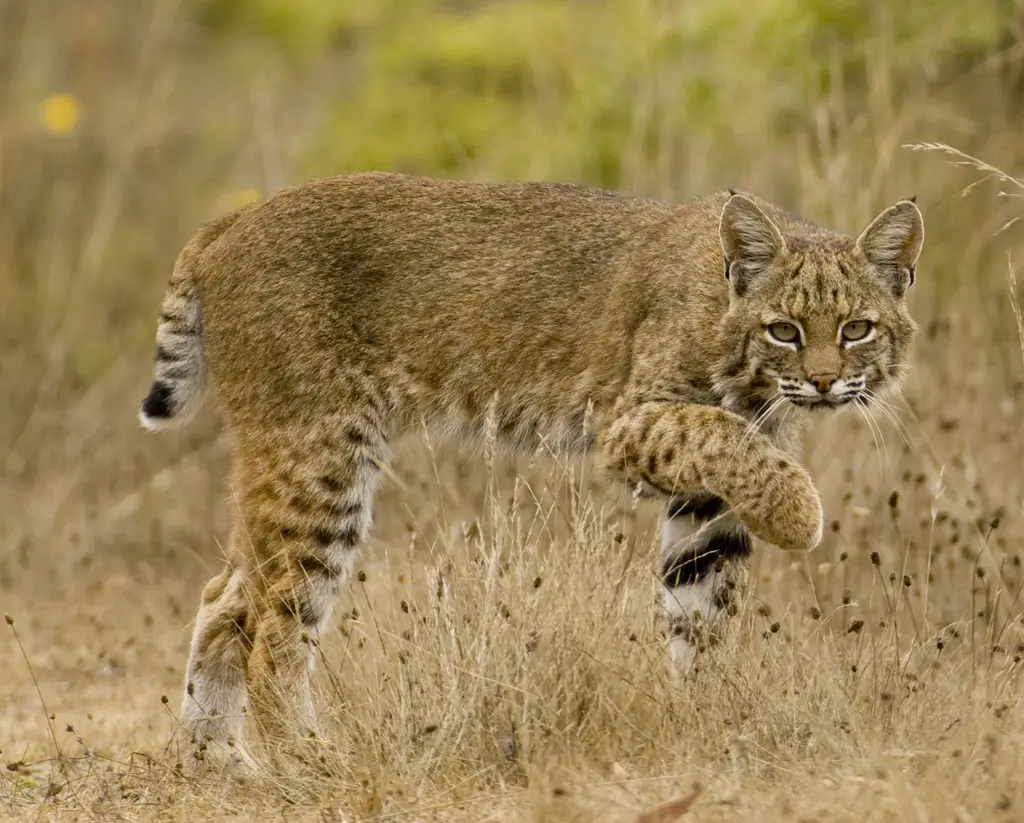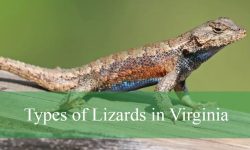A question that often stirs both curiosity and confusion among Californians is whether wild bobcats are breeding with domestic cats. Sightings of short-tailed, spotted cats near suburban areas often spark speculation that wild and domestic lines might be mixing. With bobcats increasingly adapting to urban edges and pet cats freely roaming outdoors, this idea seems tempting to believe.
However, while the thought of a “bobcat hybrid” prowling California’s backyards sounds fascinating, the reality is quite different. This article explores the truth behind the rumor — examining the science of hybridization, the habits of bobcats, and the myths that surround these wild California felines.
By the end, you’ll understand not only why bobcats and domestic cats don’t interbreed, but also how both species interact in modern California ecosystems.
Understanding the Bobcat in California

Physical and Behavioral Characteristics
The bobcat (Lynx rufus) is one of California’s most widely distributed wild cats. Recognizable by its tufted ears, short “bobbed” tail, and spotted coat, this medium-sized predator measures around two feet tall at the shoulder and weighs between 15 to 35 pounds. Despite being elusive, bobcats are surprisingly adaptable and can live in a variety of landscapes, from desert canyons and forests to suburban foothills.
Bobcats are solitary, territorial animals that hunt mainly at dusk and dawn. Their diet includes rabbits, rodents, ground birds, and sometimes small reptiles. They rarely seek contact with humans and prefer to stay hidden, using thick brush or rock outcrops for cover.
Distribution Across California
Bobcats are found throughout California, except in the most urbanized and coastal city centers. Populations thrive in the foothills surrounding Los Angeles, the Central Valley edges, the Sierra Nevada foothills, and parts of Northern California. As suburban development expands, bobcats have been sighted closer to human habitation, occasionally wandering into backyards or golf courses in search of prey.
Bobcat Reproduction and Family Life
Bobcat breeding typically occurs in late winter through early spring. Males and females come together briefly for mating, and after a gestation period of around 60 days, the female gives birth to two to four kittens. She raises them alone in a hidden den until they are old enough to hunt on their own. Once independent, young bobcats disperse to establish their own territories, avoiding contact even with other bobcats.
The Domestic Cat: A Different Lineage Entirely
Domestic Cat Behavior and Breeding
The domestic cat (Felis catus) has been living alongside humans for thousands of years. Unlike the solitary bobcat, domestic cats are social, opportunistic, and breed year-round under favorable conditions. They can have several litters annually, with kittens maturing quickly and often roaming freely if allowed outdoors.
Domestic cats vary widely in size and appearance, with some breeds like the Bengal or Pixie-Bob purposely bred to look like wildcats. This resemblance is one reason myths about bobcat hybrids persist.
Habitat Overlap with Bobcats
In suburban and rural California, outdoor domestic cats often share space with wild bobcats. They may hunt similar prey or use the same hiding spots. However, sharing territory does not mean these animals interbreed. Their interactions are mostly competitive or predatory rather than reproductive.
Why Bobcats and Domestic Cats Cannot Breed
1. Genetic Incompatibility
The bobcat and domestic cat belong to different genera — Lynx and Felis, respectively. These groups diverged millions of years ago through evolution, leading to significant genetic and chromosomal differences. For two animals to produce viable offspring, their DNA must align closely enough to allow proper cell division and reproduction. In this case, it simply does not.
Even if mating behavior occurred, the embryos would not develop successfully due to genetic mismatch. This makes natural hybridization biologically impossible.
2. Mating Behavior and Reproductive Timing
Bobcats have a very specific breeding season tied to daylight and environmental cues, usually between January and April. Domestic cats, on the other hand, can breed almost any time of year. This difference in reproductive cycles means that even if both species encountered each other, their biological clocks wouldn’t align.
Moreover, bobcats are aggressive, solitary, and territorial during mating season. Their courtship behaviors and vocalizations differ greatly from domestic cats, preventing mutual recognition as potential mates.
3. Physical and Behavioral Barriers
The size difference between the two animals creates an additional obstacle. A bobcat can weigh twice as much as an average domestic cat, and its powerful build makes any attempt at mating physically incompatible. Behavioral barriers are just as strong — bobcats do not exhibit the social tolerance or pair bonding common in domestic cats.
4. No Verified Evidence of Hybrids
Despite persistent rumors, there has never been any confirmed scientific evidence of a bobcat-domestic cat hybrid. While stories occasionally circulate online about supposed “wildcat kittens,” none have been verified through genetic testing. Most such claims turn out to involve domestic cats with wild-looking coats or misidentified young bobcats.
Myths That Keep the Rumor Alive
Myth 1: “My cat looks like a bobcat, so it must be part wild.”
Many domestic cats, especially breeds like the Pixie-Bob or Bengal, are deliberately bred to resemble wild species. Their spotted fur, short tails, and muscular builds are aesthetic traits — not signs of wild ancestry. Even feral domestic cats that grow large or rugged in appearance are not hybrids.
Myth 2: “I saw a bobcat and a domestic cat together — they must be mating.”
Bobcats and domestic cats may occasionally cross paths, especially where human development borders natural habitat. However, these encounters are almost always about territory or food, not breeding. In most cases, the bobcat is simply curious or chasing prey, not seeking a mate.
Myth 3: “People have bred bobcats and cats in captivity.”
While big cat hybrids like ligers (lion × tiger) exist under controlled conditions, no credible record shows successful breeding between bobcats and domestic cats, even in captivity. Their genetic divergence makes such pairings impossible to sustain.
Myth 4: “Bobcats are evolving by mixing with house cats.”
Evolution doesn’t work that way. Bobcats have adapted naturally to California’s ecosystems over thousands of years. They do not rely on interbreeding with domestic species for genetic diversity. In fact, wild populations remain healthy and stable without any sign of hybridization.
How Bobcats and Domestic Cats Actually Interact
1. Competition for Territory and Food
In rural and suburban zones, outdoor cats and bobcats may compete for similar prey such as rodents, birds, or rabbits. Bobcats, being larger and more efficient hunters, usually dominate these interactions. Domestic cats may avoid bobcat scent marks or areas frequented by wild predators.
2. Predatory Encounters
Unfortunately, the most common interaction between the two species is predation. Bobcats are capable of killing small pets left outdoors, particularly at night. They see unattended cats or small dogs as potential prey. This is not aggression toward humans — it’s simple survival behavior.
3. Indirect Disease Transmission
Although bobcats and domestic cats don’t breed, they can transmit parasites or diseases indirectly through shared environments or prey species. Keeping outdoor cats vaccinated and supervised reduces this risk.
Why the Confusion Persists
Appearance Similarities
Because bobcats and some domestic cats share certain features — such as spotted coats or short tails — it’s easy for people to misidentify what they see. Lighting conditions, distance, and fear can all exaggerate perceptions, leading to mistaken hybrid claims.
Viral Photos and Online Myths
Social media often fuels the myth. Pictures of large, muscular cats with short tails get labeled as “bobcat hybrids,” even when they’re clearly domestic. These viral posts spread misinformation faster than scientific facts.
Old Legends and Folklore
Stories of wildcat-housecat hybrids date back centuries, long before DNA analysis was possible. Rural folklore often described strange-looking cats as “half bobcat,” a myth that continues today, particularly in areas where wildlife sightings are rare.
How to Tell a Bobcat from a Domestic Cat
When you spot a cat that looks unusually wild, use these identification tips to tell them apart:
Key Features of a Bobcat
- Short, “bobbed” tail with a black tip on the top side only.
- Tufted ears with black backs and white patches.
- Distinct spotted or mottled coat pattern.
- Longer legs and a muscular body with a ruff of fur around the face.
- Moves with a stealthy, bounding gait rather than smooth, fluid strides.
Key Features of a Domestic Cat
- Longer, thinner tail, often ringed or solid in color.
- Smaller overall body size and shorter legs.
- Rounded face without prominent ear tufts.
- Varied coat colors, including solid or striped patterns.
- More likely to approach people or linger around homes.
Recognizing these differences helps reduce confusion and unnecessary fear about supposed hybrids.
Living Safely with Bobcats in California
1. Keep Pets Indoors at Night
The most effective way to protect domestic cats is to keep them indoors, especially at dusk, night, and dawn when bobcats are most active. Supervised outdoor time in secure “catios” or enclosed patios allows pets to enjoy fresh air safely.
2. Eliminate Food Attractants
Never leave pet food or water bowls outside overnight. These attract rodents, which in turn attract predators like bobcats. Keeping your yard clean, covered, and well-lit helps discourage wildlife visits.
3. Secure Trash and Small Livestock
If you keep chickens or small livestock, use predator-proof enclosures with solid roofs and locked doors. Bobcats can climb fences and squeeze through small openings, so secure housing is essential.
4. Maintain Yard Landscaping
Dense shrubs, woodpiles, or tall grass near homes create cover for wildlife. Trim vegetation and close off crawl spaces under decks or sheds to make your property less appealing as shelter.
5. Avoid Confrontation
Bobcats are not aggressive toward humans and rarely pose danger. If you encounter one, remain calm, make yourself appear larger, and slowly back away. Do not approach or attempt to scare it with objects. Keeping a respectful distance benefits both species.
FAQs About Bobcats and Domestic Cats in California
Do bobcats ever mate with domestic cats?
No. There is no verified evidence or biological basis for successful breeding between bobcats and domestic cats.
Can domestic cats recognize bobcats as other cats?
Probably not. Their scents, vocalizations, and behaviors differ so greatly that they likely perceive each other as separate species or potential threats.
What should I do if I see a bobcat near my home?
Keep pets indoors, remove food sources, and observe quietly from a distance. Bobcats are shy and usually leave quickly when they sense human activity.
Are bobcats dangerous to people?
Attacks on humans are extremely rare. Bobcats are reclusive and prefer to avoid confrontation. Problems only arise when they are cornered or habituated to easy food sources.
What should I do if my pet is attacked by a bobcat?
Seek veterinary care immediately. Then contact local animal control or wildlife authorities to report the incident. They can provide advice on deterrence and prevention.
Final Thoughts
The idea of bobcats breeding with domestic cats may sound intriguing, but science tells a different story. These two species are separated by millions of years of evolution, incompatible genetics, and vastly different behaviors. In California, bobcats remain wild and independent, playing a vital role in controlling rodent populations and maintaining ecological balance.
Rather than fearing hybridization, the focus should be on peaceful coexistence. By keeping pets secure, reducing attractants, and respecting natural habitats, Californians can live alongside bobcats safely and responsibly.
Bobcats and domestic cats may share the same neighborhoods, but they live in entirely different worlds — one wild, one domestic — and that boundary remains as strong as ever.






